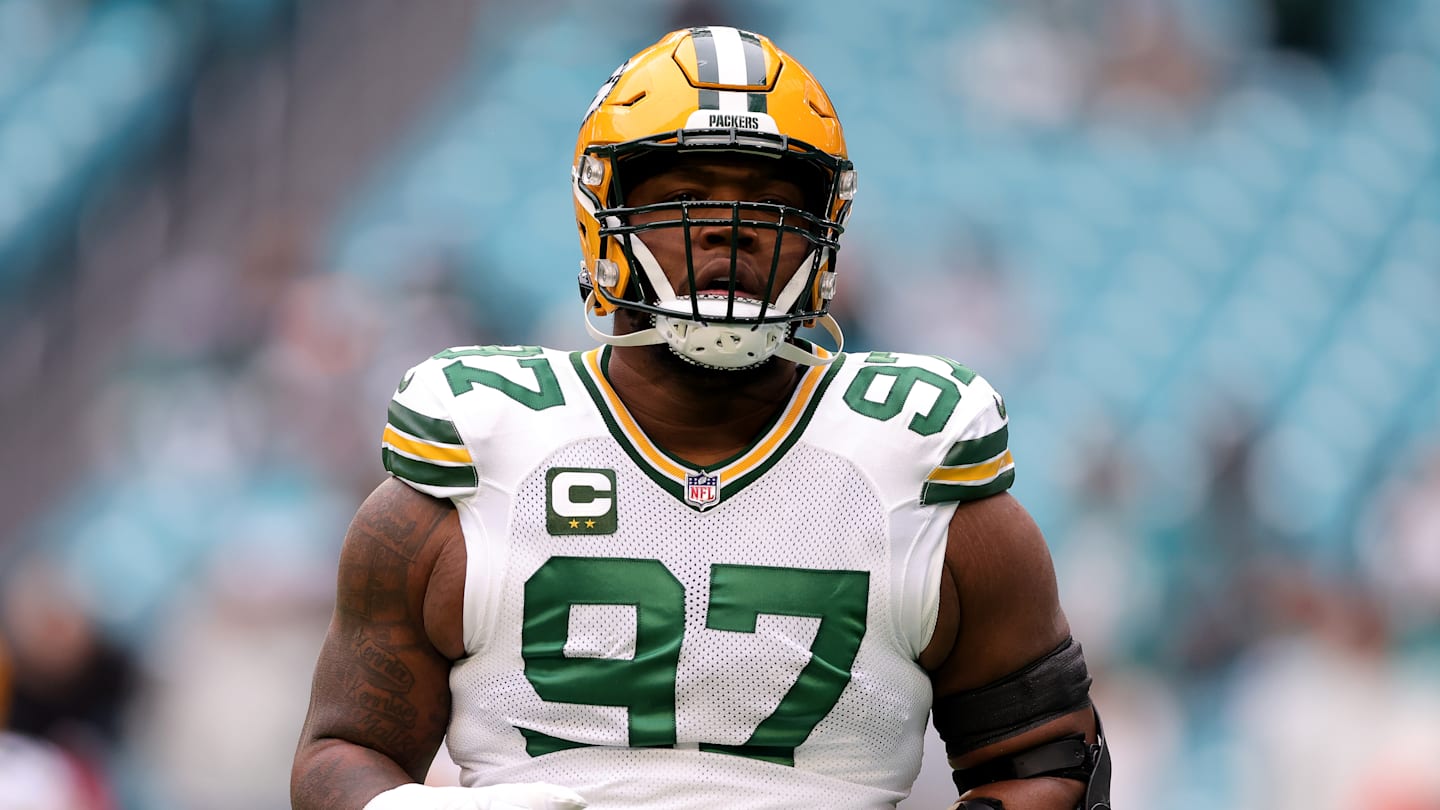As of now, the Green Bay Packers and offensive lineman Elgton Jenkins are still locked into a hold-in situation. While Jenkins did report to mandatory minicamp last month, he was a non-participant in practice and was dressed down. If he held out and simply didn’t report to Green Bay, Jenkins would have been fined north of $100,000, but this non-participant hold-in strategy allows him to avoid fines while also not hitting the practice field.
In training camp, which begins this week, the fines for a holdout increase to $50,000 per day. These are non-waivable fines, per the NFL’s newest collective bargaining agreement signed in 2020. The hold-in strategy would allow Jenkins to avoid these fines, too, though. Currently, Jenkins is on the non-football injury list, indicating that he sustained an injury outside of the facility this offseason.
I’m qualifying this with a massive “reckless speculation” label here, but it’s worth questioning the legitimacy of this injury based on recent events. If you’ve been following the news, it was revealed last week that JC Tretter, who at the time was the NFLPA’s Chief Strategy Officer, openly told players, by way of a podcast, to use fake injuries to create leverage in contract situations that they were unhappy with. The NFL won a grievance against the NFLPA for Tretter’s words, and the former Packers offensive lineman has since resigned from his position in the union.
So that’s another factor in the hold-in calculus.
Ultimately, one of two things is going to happen:
- The Packers will hold firm on Jenkins being under contract for two more years, and Jenkins will eventually come back and play for the team under his current deal.
- There will be some sort of contractual compromise.
I want to take a look at Option #2 here today.
The crux of Jenkins’ frustration is likely not his position swap to center, as guards are roughly making as much as centers, except for guard Trey Smith’s new record-breaking deal, which he signed after being hit with the franchise tag. Smith is only 26 years old, compared to Jenkins’ 29 years old, and Jenkins is currently not slated to be eligible for the tag until the 2027 season — when Jenkins will be 31. There’s a disparity in terms of the leverage Smith had compared to what Jenkins has.
Truthfully, I believe that Jenkins’ biggest concern is that the Packers don’t have any future commitments to the offensive lineman beyond this year. As it stands right now, Jenkins will carry a cap hit of $24.8 million in 2026 with a dead cap of just $4.8 million. That means that Green Bay could save $20 million in cap space by releasing him at some point next offseason. That’s not a great position to be in if you’re a player.
But that’s the exact position of flexibility that the team wants to be in, hence the lack of movement here. Historically, the Packers are unique in their contract structure. They give out massive signing bonuses on new contracts and contract extensions so that they can lock in four-year deals with little guaranteed money — if any — beyond the signing bonus. For example, right tackle Zach Tom just signed a four-year contract that saw him make the largest signing bonus in NFL history for an offensive lineman, a mark that was previously held by former Green Bay left tackle David Bakhtiari. This is simply how they do business.
Renegotiating four-year extensions after Year 2 of the extension, as Jenkins is requesting, defeats the purpose of why the Packers are handing out four-year deals with big signing bonuses in the first place. So, where do we go from here?
As far as I can see, the best compromise, if Green Bay is going to make one, is for Jenkins to ask the team to convert most of his $18.5 million base salary in 2026 into a roster bonus that would trigger early in the next offseason. The money doesn’t have to be guaranteed automatically, but it would become guaranteed on a specific date (such as the third day of the new league year).
If those terms were agreed to, the Packers would still have the option to move on from Jenkins for $20 million in freed-up salary cap space (on top of having him return to practice), but Jenkins would then receive some certainty that the decision would be made fast enough where if Green Bay wanted to move on from him that there would still be free agent money to be spent around the league. In Jenkins’ mind, he probably wants to avoid the same fate as the Packers’ former two-time All-Pro cornerback Jaire Alexander, who was released for cap relief in June — months after the first wave of free agency — and only signed a deal that will pay him $4 million before his playing time incentives. For reference, Eric Stokes, a struggling cornerback who left Green Bay at the start of free agency this offseason, signed for $3.5 million on his one-year deal.
Timing the market is important in free agency. The Packers are set to be over the salary cap in 2026, after the extension of Tom, and one of the easiest ways for them to create cap space is by eventually releasing Jenkins for cap relief.
The ultimate compromise might look something like “Hey, this is probably going to be inevitable, but let’s at least make the decision earlier in the 2026 offseason than the team did with Alexander.” Whether the Packers feel like they need to make that compromise, considering that Jenkins is under contract for two more years and they have the franchise tag option in 2027, is another story. If there’s a compromise to be made, though, it probably looks like turning Jenkins’ 2026 salary into a roster bonus that serves as a team option early next offseason.
Source link


